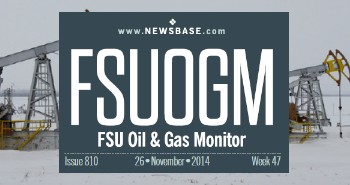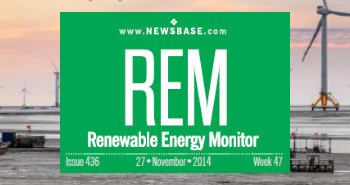Gazprom starts extracting white hydrogen in East Siberia

Russia’s national gas company Gazprom has produced its first so-called “white” hydrogen from the Kovyktinskoye gas condensate field in Eastern Siberia, though the volumes and concentration remain low, a company executive said on April 16.
Low-carbon hydrogen – widely recognised as a key pillar of the global energy transition – is colour-coded according to the way it is produced. Most attention has been focused on blue hydrogen, steam reformed from natural gas with the associated carbon emissions captured, and green hydrogen, derived from water using electrolysis powered by renewable energy. Interest in naturally occurring white hydrogen, generated by continuous geochemical reactions in hard rock, has only gained traction in the last few years.
This white hydrogen is often found in relative purity in geological formations, though some gas fields like Kovyktinskoye can also contain significant quantities. Gazprom has previously estimated that the field’s gas holds a 3% concentration of hydrogen.
The company announced plans to start extracting this naturally occurring hydrogen at Kovyktinskoye and other fields in Eastern Siberia last October. Alexander Ishkov, a department deputy head at Gazprom, provided the latest update on the project on the sidelines of the Eurasian Oil and Gas Forum in Moscow. He confirmed that several litres of hydrogen had been extracted at Kovyktinskoye, but in small concentrations.
Hydrogen production is not new for Gazprom, Ishkov noted, adding that the company has been generating hydrogen through hydrocarbon processing for around 40 years, including at the Sosnogorsk plant in Komi. However, there is currently no commercial market demand for low-carbon hydrogen, he said, and Gazprom uses all the hydrogen it produces for its own needs.
Should demand emerge, Gazprom would be able to produce hydrogen of marketable quality by investing in additional purification infrastructure, Ishkov said.
Kovyktinskoye is one of the largest gas fields in the world, containing an estimated 1.8 trillion cubic metres of natural gas and 65.7mn tonnes of condensate. Its production is in the process of ramping up to a capacity of 27bn cubic metres per year, delivering gas to China via the Power of Siberia 1 pipeline.
Beyond tapping white hydrogen at Kovykitinskoye, Gazprom could also convert the field’s gas into blue hydrogen, using subsurface production techniques, while sequestering the CO2 that is emitted, if a means of marketing this hydrogen arises. But the feasibility of doing this depends on cost-effectiveness, yield and emissions intensity.
Presumably, hydrogen could be mixed into the natural gas flow of Power of Siberia and sold to China.
Gazprom has been actively involved in hydrogen energy since 2020, establishing a dedicated subsidiary – Gazprom Hydrogen – to advance gas-based hydrogen technologies. The firm initially viewed hydrogen as a tool to decarbonise Russian industry and position itself as a global exporter. However, export prospects have diminished in light of the EU’s commitment to phase out Russian energy, as Europe had been tipped as the main market for Russian hydrogen.



Follow us online